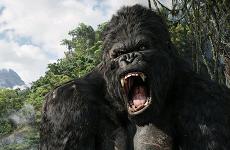| Academy Award Nominations and Winners: |
| Best Art Direction: Grant Major; Dan Hennah & Simon Bright |
| ★ | Best Sound: Christopher Boyes, Michael Semanick, Michael Hedges, and Hammond Peek |
| ★ | Best Sound Effects: Mike Hopkins & Ethan Van der Ryn |
| ★ | Best Visual Effects: Joe Letteri, Brian Van't Hul, Christian Rivers, and Richard Taylor |
|
| Golden Globe Nominations: |
| Best Director: Peter Jackson |
| Best Original Score: James Newton Howard |
|
| Other Awards: |
| National Board of Review: Special Achievement in Visual Effects |
| British Academy Awards (BAFTAs): Best Visual Effects |

